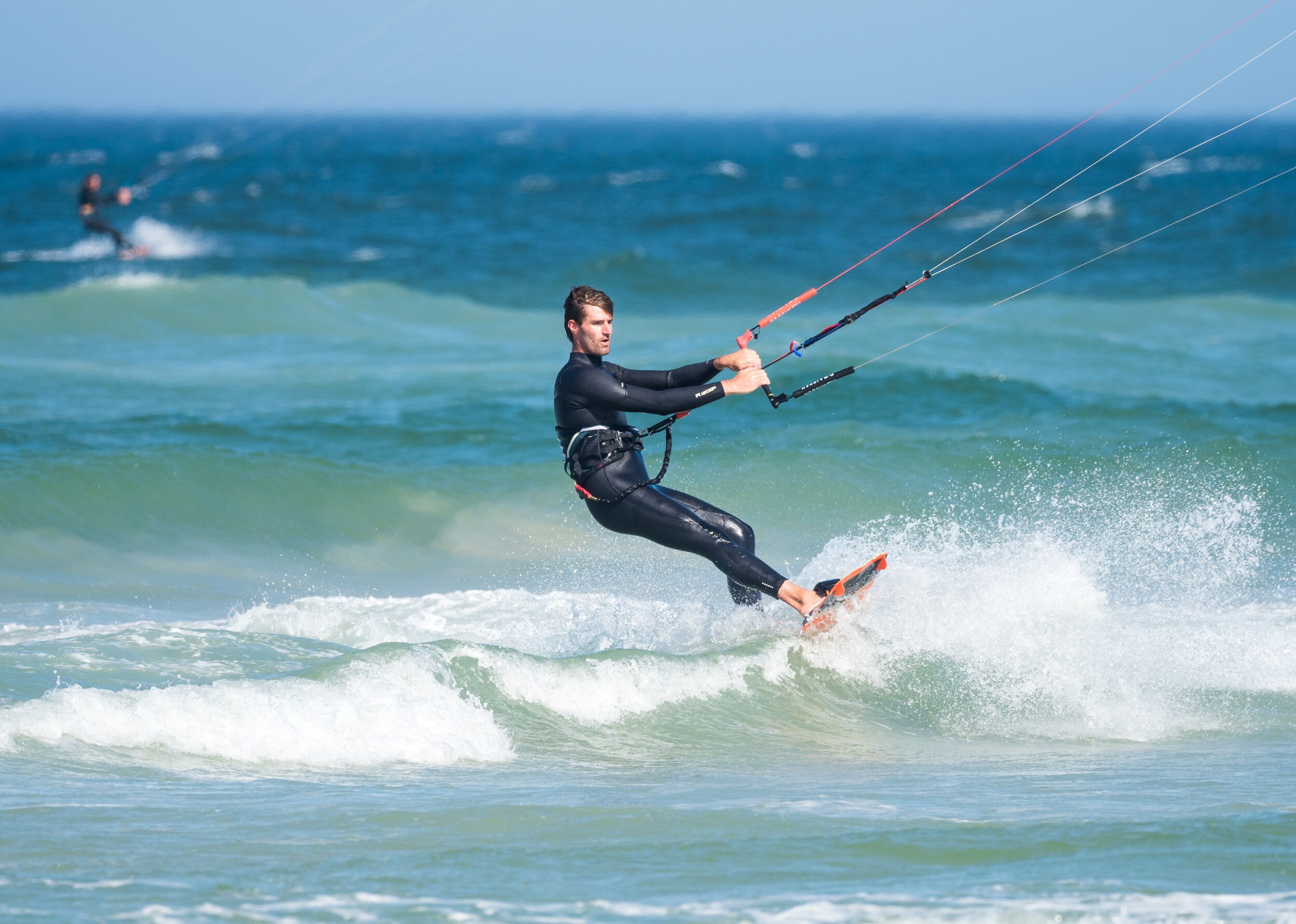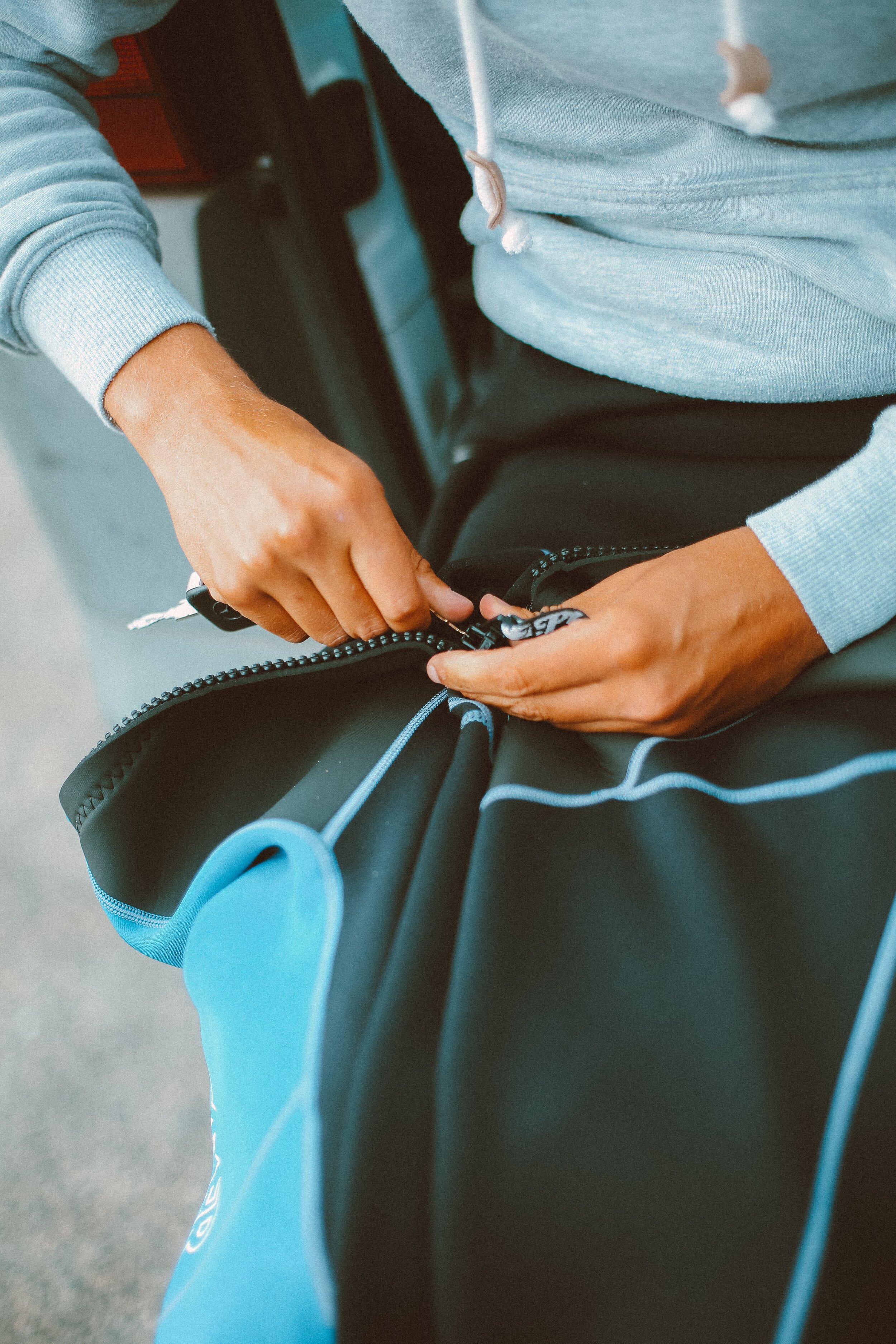The Surf Culture and the Wetsuit by Kenneth W. Wright, MD
The Surf Culture and the Wetsuit
by Kenneth W. Wright, MD
One would think that surfers are independent souls, open to trying new things and not reflex followers of the crowd. Actually there is a strong surfer culture that engenders conformity. We even have unwritten rules that are inviolable. For example, you don’t drop in on a surfer who is cutting across a wave. Cut off another surfer and you will immediately endure the wrath of your peers. There is also conformity in regards to clothes, personal style, and even the way we talk, “Dude”.
The surfing culture is so strong that it will, at times, resist even the most positive change. One example that comes to mind is the wetsuit. Despite the clear advantage of a wetsuit in our cold waters, it is amazing that there was so much emotional resistance to its acceptance by the surfing culture.
A recent reproduction of the original late 1960s Bodyglove ad with Mike Purpus, Robert August, Rich Chew, and Rick Irons, all wearing this same wetsuit. The new ad was featured in "Drop Zone" magazine. Courtesy http://archive.surfingheritage.org/2012/12/vintage-bodyglove-wetsuit.html
I remember surfing Torrance Beach in the early 1960s. The winter surf was especially good often with 5 to 6 foot perfect waves. This was before the Army Core of Engineers dredged 1.4 million cubic yards of sand onto the Redondo Beach shore to widen the beach. Yes, in 1969 they widened the beach. The unintentional consequence was the sand filled in the offshore reef which severely hurt the shape of the waves. The waves changed from beautiful peaks to horrible closed out walls. Pre-dredge surf in South Redondo was legendary.
Almost every morning at 6:00 AM before high school classes started, my friend Willy and I would paddle out into near perfect waves at Torrance Beach. It was super great except for one slight problem, the water was freezing cold around 58 degrees and we were in board shorts – no wetsuits. That’s right no wetsuit. Despite the fact that wetsuits were introduced for diving in the early 1950s most surfers in the early 1960s would not wear a wetsuit. We didn’t wear wetsuits because it was not cool, and not accepted by the South Bay surfing culture. Surfers put a stigma on wearing a wetsuit, you were not a “Man” if you wear a wetsuit. Unbelievable but true.
Our routine was to paddle out on our 10-foot longboards, knee paddling to minimize contact with the cold water beneath us. We would time our paddle out to miss the larger waves in order to avoid getting wet. If you got caught by a wave it was a disaster – so horribly cold. We would surf for 5 to 10 minutes then come in just before hypothermia set in, and cover ourselves with blankets. After warming up we would get up, paddle out, and do it again.
One freezing cold morning Willy and I were sitting in the sand at Torrance Beach with blankets on us trying to warm up after just getting out of the water. Then we saw a surfer walking into the surf wearing a sleeveless diving wet suit. I stupidly said to Willy, “Look at that kook in a diving wet suit. He looks ridiculous.” Willy dutifully replied, “Yes what a wimp, a real kook.” As we sat there in our blankets shivering our butts off, we quietly berated this surfer in a wetsuit. After 20 minutes we noticed he was still in the water surfing. I said, “Hey Willy, that surfer is still in the water – what the heck it’s freezing out there.” Then it hit us. We were the stupid kooks freezing our butts off when there was a great option – a wetsuit.
In truth the dive wetsuits were thick and restrictive to movements like paddling, so they were difficult to use for surfing. Twin brothers Bob and Bill Meistrell of Dive N’ Surf fame adapted the dive wetsuit to a more flexible surf wetsuit they called “Body Glove”. Even though the surf wetsuit was available there was still strong resistance from the local surf community. To counter the stigma, the brothers formed a Body Glove Surf team to show that wearing a surf wetsuit was “cool” (photo). The brothers held contests on how fast a surfer could put on and take off a Body Glove wetsuit. Changing the herd mentality was not easy. Finally in the mid to late 1960s surfers accepted the wetsuit which is now part of our standard surf garb.
Cultural mores can be beneficial, such as the rule not to cut off another surfer, that’s a safety issue. However, mores can also hamper progress. This even happens in medicine. Many years ago, I and our team at Cedars-Sinai Medical Center published a peer review scientific article showing that reducing oxygen to premature newborns reduces the retinal complication of Retinopathy of Prematurity (aka “ROP”), a potentially blinding disorder. The status quo were very resistant even though the facts were clear. Finally after several years of lecturing on the benefits of low oxygen in premature infants, it was accepted and is now standard of care in neonatal intensive care units around the world. It’s easy to fall in the trap of judging based on emotion or the crowd. Better to be independent thinkers and let the facts be our guide.
References
Chow LC, Wright KW, Sola A, et al. Can changes in clinical practice decrease the incidence of severe retinopathy of prematurity in very low birth weight infants? Pediatrics 2003, 111(2): p. 339-345. California
Cool: How the Wetsuit Became the Surfer's Second Skin By Hunter Oatman-Stanford — June 7th, 2013 https://www.collectorsweekly.com/articles/how-the-wetsuit-became-a-surfers-second-skin/
KENNETH WESTON WRIGHT, MD.
Cell – 310-818-1807
A caring physician, Dr. Wright has been devoted to the welfare of children and the health of their eyes for over 30 years. He is an internationally respected pediatric eye surgeon with specialty in adult strabismus. In 2001, Dr. Wright founded the Wright Foundation for Pediatric Ophthalmology, a non-profit, whose mission is to reduce blindness and suffering from eye disorders in children through research, education, and clinical care. To this end, Dr. Wright has established a special pediatric eye clinic that serves underprivileged children where no child is turned away.
Dr. Wright has operated on children from every walk of life, from royalty to the underprivileged. He has also participated in numerous international medical missions worldwide. Recently, Dr. Wright was awarded a service medal of honor from the office of the President of Panama for over 20 years of service to Panamanian children. As fate would have it, the youngest of Dr. Wright’s five children developed crossed eyes in infancy. Rather than refer out, Dr. Wright performed “early surgery” on his own son with great results – his son later qualified as an expert marksman in the United States Marines.
He has authored more than 80 peer-reviewed scientific research papers and 7 textbooks on ophthalmology and eye surgery including Strabismus Surgical Atlas and number one selling Pediatric Ophthalmology and Strabismus Text by Oxford Press. His publication in Pediatrics 2003 on preventing ROP with physiologic low oxygen has changed the way we treat premature infants and saved countless babies from blindness worldwide. He is a national and international speaker giving over 100 invited lectures worldwide. In 2015 he was invited guest of honor at Harvard University and Boston Children’s Hospital.
Dr. Wright ran for US Congress in 2016 and 2018 and advanced through the primary election to the general election.
On a personal note, Dr. Wright loves to surf.
Present Practice and Academic Affiliations:
Wright Foundation for Pediatric Ophthalmology & Strabismus, 2001 - present
Founder and Director of non-profit 501- c3) for research, education and clinical care of all children including the underprivileged, Los Angeles, CA
Cedars-Sinai Medical Center Attending Staff Refer and Follow 2015 to Present





